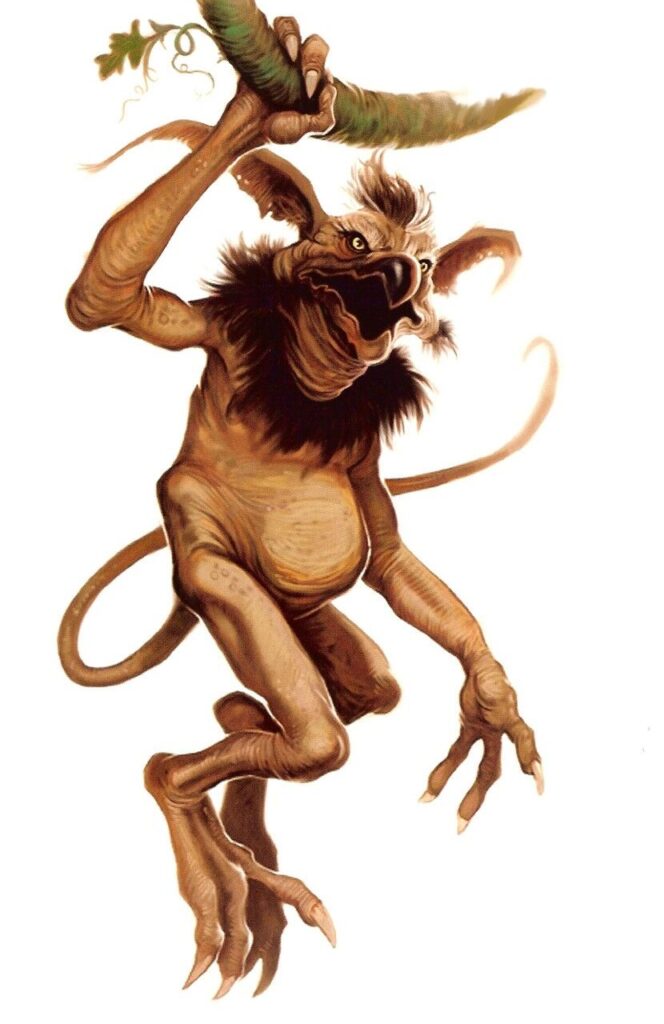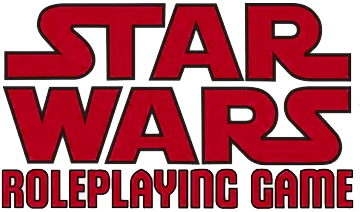Index – A – B – C – D – E – F – G – H – I – J – K – L – M – N – O – P – Q – R – S – T – U – V – W – X – Y – Z – #
What are Creatures?
Creatures in game terms are non-sentient living beings that do not use rational thought processes to interpret their environment; instead, creatures rely on instinct.
This does not mean that all creatures are stupid; many are quite clever, and can even learn commands and simple tricks, but they are not considered truly intelligent: they are essentially animals.
Creatures do not possess the same number of attributes as sentient species; creatures are limited to Dexterity, Perception and Strength.
Role of Creatures in the Game

Creatures can be used in a Star Wars roleplaying session in a number of ways. Most often, creatures are overlooked, viewed simply as opponents in a combat situation. While this view is not without precedent (witness the fearsome wampa from The Empire Strikes Back), these exotic animals can be useful in a variety of ways. At the end of this chapter are a number of common creatures that gamemasters can use to spice up a roleplaying session. Gamemasters looking for more creatures should see the roleplaying supplement Creatures of the Galaxy.
Transport and Pack Animals
One of the first (and most memorable) creatures seen in the Star Wars trilogy is the bantha, a massive, horned beast of burden. Animals of this type can be extremely useful to a gamemaster trying to give a setting a more primitive feel; the players will know their characters are in a wild, untamed region if they are forced to rely on pack animals to get from place to place, instead of using more high-tech transportation.
Pet
Some animals can be kept as pets, and even trained to perform useful tasks. Perhaps a player character can train an agile creature to fetch small items that have been dropped, or to screech a warning when an unfamiliar person approaches. While the training of such a creature should not dominate a roleplaying session, a pet can add color and humor to a Star Wars game.
Food
One often-overlooked use for creatures in the roleplaying game is simply food. When stranded on an alien planet, characters may be forced to hunt to replenish dwindling food stores. These scenes can be roleplayed out to great effect, and can often lead to some exciting chases and plot twists. Animal hides and bones can also be useful in emergencies, particularly if the player characters need to fashion simple tools.
Predators
Perhaps the most common “game use” for creatures, predatory animals can be used to add some surprise and excitement to a roleplaying session. Canny gamemasters can use these encounters to complicate matters for the players. For example, as the player characters sneak through an alien forest to ambush an Imperial patrol, they are suddenly attacked by a cluster of ferocious vine snakes. The characters must deal with the situation quietly or risk alerting the Imperials to the impending ambush.
Chance Encounters
Creatures are ideal for use in chance encounters, particularly in surroundings that are unfamiliar to the player characters. Gamemasters are encouraged to use creatures that steal “shiny objects,” (like blaster power packs or credit vouchers), packs of running animals that storm through the characters’ camp, or anything else that may surprise the player characters.
Designing Creatures
Many gamemasters will doubtless want to create their own monsters and animals for use in a Star Wars game. Given the vast amount of habitable planets in the Star Wars galaxy, gamemasters should feel free to populate their campaign environment with as many colorful, exotic animals as they
wish.
Much like gamemaster characters, the amount of detail depends on how much you intend to use the creatures — you’ll really want to detail a creature that will be used throughout a roleplaying session or campaign. If the creature is designed to be used for a brief scene, there is no need to fully flesh it out. Simply assign the die codes that will make the animal a match for the player characters.
When designing a creature, you may want to add information on the creature’s habitat, behavior, attack forms, and so forth. Did the creature evolve naturally, or was it a biotech experiment gone awry? Is the creature benign or predatory? How does it hunt? Does it have particularly sharp instincts,
or is it easy to capture? Does the creature possess any special abilities that can make it valuable (or even dangerous) to catch? Answering these questions can help you create a more interesting and unusual addition to your Star Wars game.
Game Statistics
All creatures in the Star Wars roleplaying game have a number of game statistics. These are “average” stats — individual creatures can vary considerably. They are listed as follows.
Type: A quick summary and classification of the creature.
Attributes and Skills: Non-intelligent creatures have only Dexterity, Perception and Strength attributes. Some creatures have skills, such as brawling, climbing/jumping or swimming.
Creatures use their Strength or brawling skill to hit in combat, as well as their Strength to determine damage. (Some creatures have claws or teeth which can do extra damage; they’re listed under “Special Abilities.”)
Special Abilities: These listings note any special abilities or natural tools that help the creature. Special abilities may include claws, armor, the ability to breathe water or any number of other tools or abilities.
Move: The average Move for the creature. If the creature has two or more prime modes of movement, all will be listed.
Size: A common size range for adult specimens of the creature.
Scale: Normally creatures will be “creature” scale (which is the same as “character” scale). This listing will be given only if the creature is not creature scale.
Orneriness: If the creature can be ridden, an orneriness code will be listed. This die code is rolled against the rider’s beast riding skill to see if the rider can maintain control of the creature in dangerous situations.
A – B – C – D – E – F – G – H – I – J – K – L – M – N – O – P – Q – R – S – T – U – V – W – X – Y – Z – #

